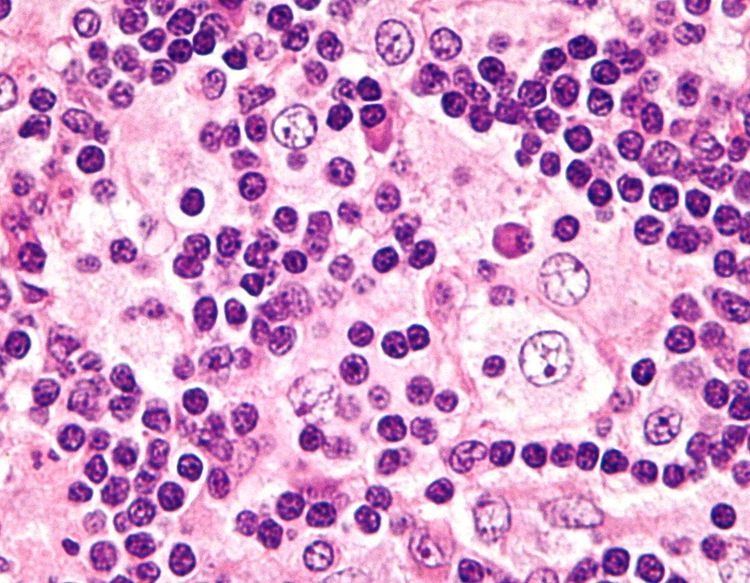 | ||
In medicine, emperipolesis is the presence of an intact cell within the cytoplasm of another cell. It is derived from Greek (em is inside, peri is around, polemai is wander about). Emperipolesis is an uncommon biological process, and can be physiological or pathological.
Contents
It is related to peripolesis, which is the attachment of one cell to another.
Emperipolesis is unlike phagocytosis, in which the engulfed cell is killed by the lysosomal enzymes of the macrophage. Instead, the engulfed cell remains viable within the other, and can exit at any time without causing structural or functional abnormalities in either cell.
Classification
Emperipolesis has been classified into two categories:
- Engulfment of hemapoietic cells by megakaryocytes such as in hematolymphoid disorders (Hodgkin's disease, leukemia, acute and chronic myeloid leukemia, non-Hodgkin's lymphoma, myeloproliferative disorders, myelodysplastic syndrome)
- Engulfment of inflammatory cells by histiocytes, which is a hallmark of Rosai-Dorfman disease
Other associations
It is seen in various conditions including:
References
Emperipolesis Wikipedia(Text) CC BY-SA
